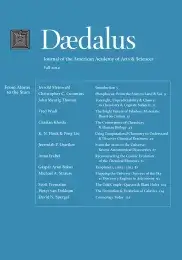The Odd Couple: Quasars & Black Holes
Quasars emit more energy than any other object in the universe, yet are not much bigger than our solar system. Quasars are powered by giant black holes of up to ten billion (1010) times the mass of the sun. Their enormous luminosities are the result of frictional forces acting upon matter as it spirals toward the black hole, heating the gas until it glows. We also believe that black holes of one million to ten billion solar masses – dead quasars – are present at the centers of most galaxies, including our own. The mass of the central black hole appears to be closely related to other properties of its host galaxy, such as the total mass in stars, but the origin of this relation and the role that black holes play in the formation of galaxies are still mysteries.
Black holes are among the most alien predictions of Einstein’s general theory of relativity: regions of space-time in which gravity is so strong that nothing –not even light–can escape. More precisely, a black hole is a singularity in space-time surrounded by an event horizon, a surface that acts as a perfect one-way membrane: matter and radiation can enter the event horizon, but, once inside, can never escape. Although black holes are an inevitable consequence of Einstein’s theory, their main properties were only understood–indeed, the name was only coined–a half-century after Einstein’s work.1 Remarkably, an isolated, uncharged black hole is completely characterized by only two parameters: its mass and its spin (or angular momentum). An eloquent tribute to the austere mathematical beauty of these objects is given by the astrophysicist Subrahmanyan Chandrasekhar in the prologue to his monograph The Mathematical Theory of Black Holes: “The black holes of nature are the most perfect macroscopic objects there are in the universe: the only elements in their construction are our concepts of space and time. And since the general theory of relativity provides only a single unique . . .
The complete essay is available within the PDF of the entire issue, which is online here.
